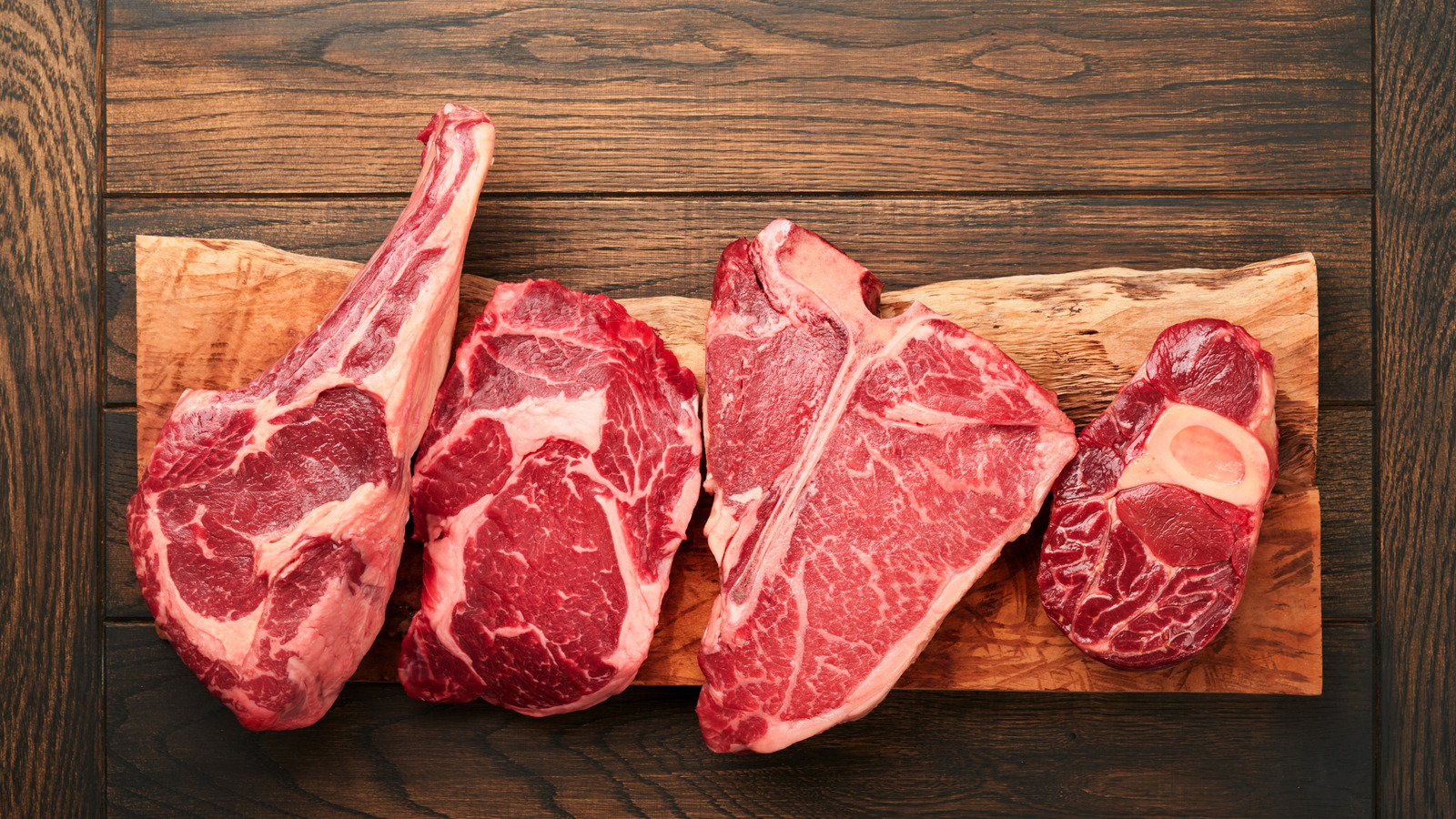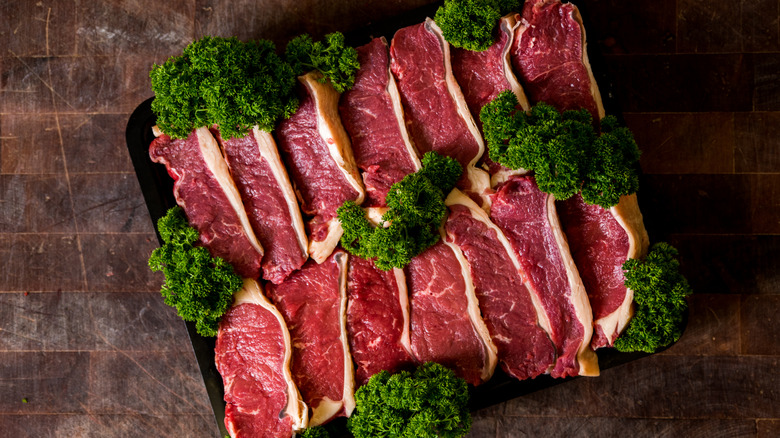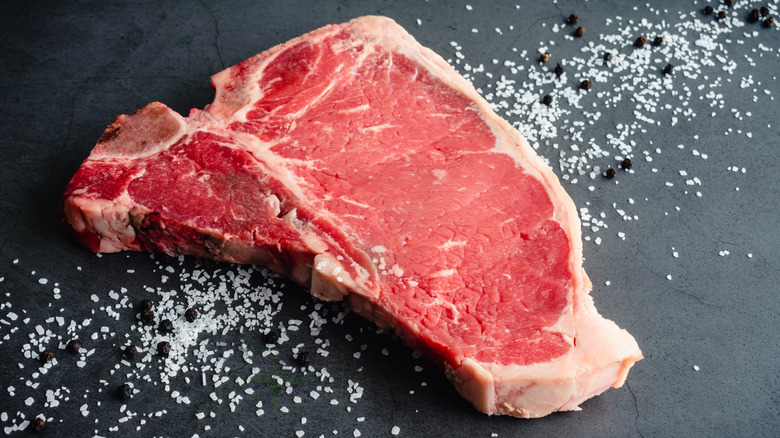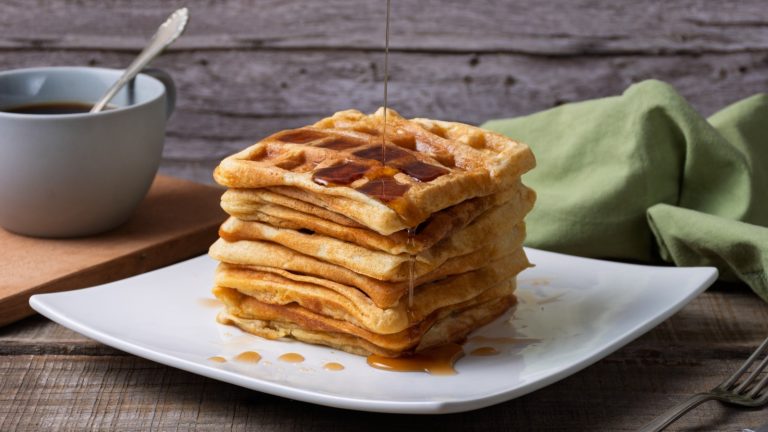Fat is central to the steak discourse. It provides flavor, succulence, and moisture, and it influences the meat’s texture when it’s cooked. The highly desirable intramuscular specks of fat will sell any steak savant on a cut, and even the United States Department of Agriculture uses this marbling as a quality indicator — beef is designated USDA Prime, the highest grade, only when it has abundant marbling. Although marbling does impact your steak, it isn’t all created equal. Some comes in large, haphazard spots, and other marbling is fine and delicate (like the kind in wagyu beef). Some fat will be a bright white, while other fat will have a yellow hue. The distribution of marbling gives you a hint as to quality — but the color of fat, both intra and intermuscular, has a different story to tell.
Simply put, the color of steak fat indicates what the cow ate throughout its life. Cattle, alongside other animals like sheep and even giraffes, are ruminants, which means that they are herbivores who chew cud from their first stomach compartment (or rumen). A ruminant has to eat plants like hay or grass, and cows typically fall under a couple of sustenance categories, mainly grain-fed or grass-fed. It may not sound like that big of a difference for those of us with a far more varied diet, but grains and grasses influence a number of qualities in an animal — and the color of fat is one of them. Fat from grain-fed cows will be white, and fat from grass-fed will have a yellow tint.
Yellow-tinted fat means meals of grass
If you come across a steak with yellow fat in the grocery store or market, it could be a little off-putting — at least if you’re in a country like the United States or South Africa, where grain-fed is the norm and white fat is typically preferred. But even though it might look unusual, the hue is really only the result of a cow’s eating green forages and the eventual accumulation of the chemicals and vitamins found in such a diet. These grasses contain chemical compounds called carotenoids, which are a type of antioxidant. Beta-carotene, the carotenoid that converts to vitamin A within the body, acts as a yellow pigment when it’s absorbed into the fat. The more beta-carotene in the consumed grass, the more yellow the fat will be (similarly, carotenoids are also responsible for the orange color of carrots).
Beta-carotene and, to a lesser degree, another carotenoid called lutein are a big part of coloring the steak fat, but there are a few other possible contributing factors. Some research has shown that female cows tend to have brighter yellow fat, as do older cows and certain breeds. Even so, that color inclination is more pronounced when the cows are feeding on carotenoid-rich grasses.
Grain-fed diets produce pure white fat, and a mixed diet creates in-between hues
Grain-fed cattle eat very little carotene in their diet, so the yellow pigment doesn’t accumulate in their adipose tissue the way it does with grass-fed cattle, leaving them with bright, white fat. These cattle must take supplements for the vitamin A that beta-carotene naturally provides. Producers might choose grain-based diets because grain helps cows reach their required weight more quickly and results in meat that’s more marbled (and thus, designated as those top beef grades), but on the consumer side, it’s often a mere matter of preference. There are lots of differences between grass-fed beef and grain-fed beef — nutrient levels, flavors, and textures — and fat color is a helpful indicator of what to expect from your steak.
You might have noticed that the distinction between colors of steak fat isn’t always pronounced, and there is often a shade spectrum rather than a dividing line of pure white and bright yellow. That’s because the diet of cattle tends to have a spectrum, too — many cattle won’t be purely grass-fed or purely grain-fed. Cattle that are out eating in a pasture all year long for their whole life (technically called “grass finished”) will have yellowed fat, but “grass-fed” can also mean that the cow began by eating grass and later ate grain or received grain in addition to grass. Grass-fed also doesn’t necessarily mean pasture-raised, so the cow could have been fed hay or silage, which doesn’t have the same level of carotene as fresh grass. As the carotene intake decreases, so does the fat yellowing — all the way down to the pure white fat of grain-fed cattle.







